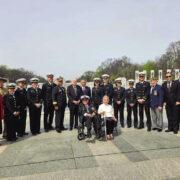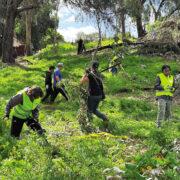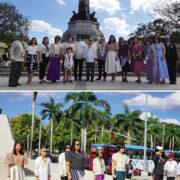ON July 11, 2014, USCIS issued a policy memorandum on the adjudication of H-1B petitions for nursing occupations. Most registered nurse positions do not qualify for H-1B classification but the memorandum recognizes that, due to changes in the nursing industry, some nurse positions may now qualify for H-1B classification.
Under INA 101(a)(15)(H)(i)(b), an H-1B nonimmigrant is defined as one who is coming to the US temporarily to perform services in a specialty occupation, as a Department of Defense researcher or as a fashion model. Under INA 214(i), a specialty occupation is one that requires: (1) theoretical and practical application of a body of highly specialized knowledge; and (2) attainment of a bachelor’s or higher degree in the specific specialty or its equivalent as a minimum for entry into the occupation in the US.
To qualify as a specialty occupation, the position must meet one of the following criteria under 8 CFR 214.2(h)(4)(iii)(A): (1) a bachelor’s or higher degree or its equivalent is normally the minimum requirement for entry into the particular position; (2) the degree requirement is common to the industry in parallel positions among similar organizations or, in the alternative, an employer may show that its particular position is so complex or unique that it can be performed only by an individual with a degree; (3) the employer normally requires a degree or its equivalent for the position; or (4) the nature of the specific duties are so specialized and complex that knowledge required to perform the duties is usually associated with the attainment of a bachelor’s or higher degree.
To qualify to perform services in a specialty occupation, the alien must meet one of the following criteria under 8 CFR 214.2(h)(4)(iii)(C): (1) have the required US bachelor’s or higher degree; (2) hold a foreign degree which is equivalent to a US bachelor’s or higher degree; (3) hold an unrestricted state license, registration or certification which authorizes him to fully practice the specialty occupation; or (4) have education , specialized training, or progressively responsible experience that is equivalent to completion of a US bachelor’s or higher degree.
The reason most registered nurse positions do not qualify for H-1B classification is because these positions do not usually require a bachelor’s degree and thus cannot be classified as specialty occupations. However, USCIS has finally realized that employers are increasingly showing preference for more highly educated nurses.
Under the July 11, 2014 memorandum, there are 3 ways a registered nurse position may qualify as a specialty occupation.
First, if a state requires a bachelor’s degree in nursing to obtain a nursing license, then a registered nurse position in that particular state would generally be considered a specialty occupation. The nursing profession is regulated at the state level. So far, no state requires a bachelor’s degree in order to obtain a nursing license. However, state licensure requirements may change and USCIS recognizes this possibility.
Second, positions that require nurses who are certified advanced practice registered nurses (APRN) would generally be considered specialty occupations because these nurses have advanced level of education and training. The National Council of State Boards of Nursing (NCSBN) describes APRNs as nurses with at least a master’s degree working in a specific role. APRN occupations include Certified Nurse-Midwife, Certified Clinical Nurse Specialist, Certified Nurse Practitioner and Certified Registered Nurse Anesthetist.
Third, other registered nurse positions may qualify as specialty occupations depending on the facts of the case. The July 11, 2014 memorandum describes some of these nurse positions that may arguably be specialty occupations: (1) addiction nurses, who care for patients trying to overcome various substance addictions; (2) cardiovascular nurses, who care for patients who had heart surgery; (3) emergency room nurses; (4) genetic nurses, who treat patients with genetic disorders; (5) neonatology nurses, who care for newborn babies; (6) nephrology nurses, who care for patients with kidney-related problems; (7) oncology nurses, who care for patients with cancer; (8) pediatric nurses, who work with patients from infancy to young adulthood; (9) peri-operative nurses, who assist surgeons during surgeries; and (10) rehabilitation nurses, who care for patients with disabilities.
The July 11, 2014 memorandum does not necessarily affirm that the above enumerated nurse positions or even APRN occupations are definitely specialty occupations. The memorandum merely recognizes the possibility that these nurse positions would qualify as specialty occupations. It invites employers who would claim that any of these positions are specialty occupations to submit evidence to support their claim. Such evidence may include those pertaining to: (1) the nature of the petitioner’s business; (2) industry practices; (3) detailed description of the duties to be performed within the petitioner’s business operations; (4) advanced certification requirements; (5) American Nurses Credentialing Center (ANCC) Magnet Recognition status which recognizes nursing excellence; (6) clinical experience requirements; (7) training in the specialty requirements; and (8) wage rate relative to others within the occupation.
* * *
Charles Medina practices immigration law. Visit his website at www.medinalawgroup.net for more details. This article provides general information only and does not provide legal advice on any specific matter or predict the outcome of any legal matter. It does not invite or create an attorney-client relationship.







